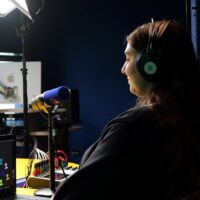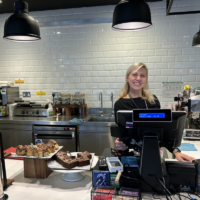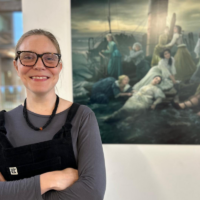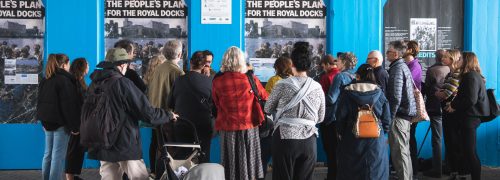
People
What does it mean to make space? Jessie Brennan on her art in the Royal Docks
“Take Your Place.” “Go the Distance.” You may have spotted the bold, text-based artworks that have appeared recently around the Royal Docks, some several storeys high.
These are the Making Space series, the work of artist Jessie Brennan. Jessie is known for monumental, thought-provoking art designed in collaboration with communities. Here, she has worked with Peacock Academy, Royal Docks Adventure and other local group for months before creating these pieces — the first in our new public art programme.
She talked to us about honouring the area's powerful history and interrogating its future.
How would you describe your creative process?
My previous projects have explored housing, the politics of regeneration, and wider questions about, “Who is London for?” A lot of the artwork outcomes tend to come directly from the experiences of a place and the people that I meet and work with... That can come through personal stories, but behind those stories, there are always decisions being made that are deeply political and affect people living in the area.
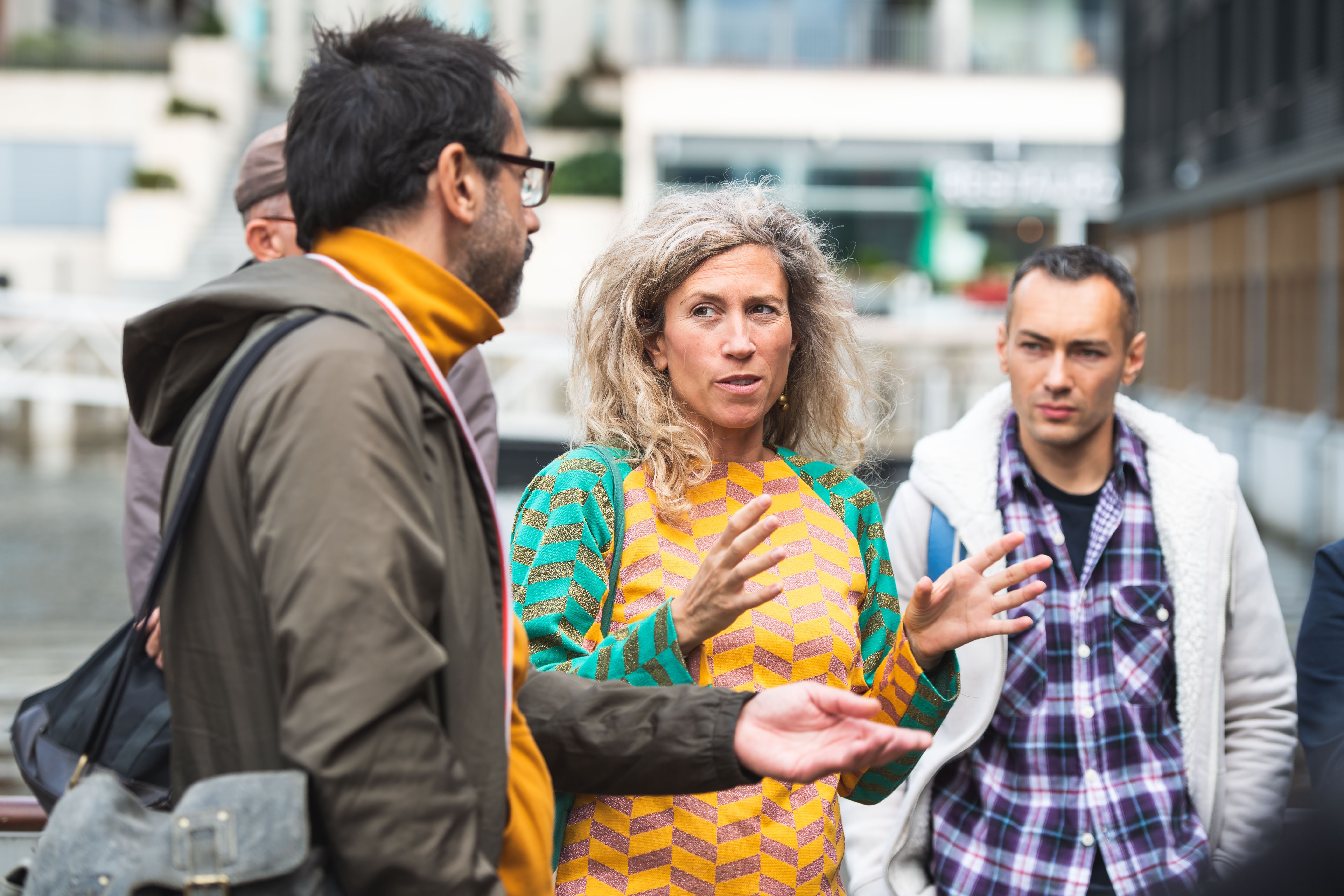
Jessie Brennan
Jessie conducting a walking tour last month with artist and researcher Alberto Duman. Photo: Stephen Wright.
Did you have a relationship to the area?
I live in Tower Hamlets, the neighbouring borough. I don’t know the area in the ways that people who live or work here do, but I’ve always been really interested in what has been happening with the Royal Docks.
With Rokhsana Fiaz being elected as mayor, these are quite exciting times. She was a local councillor for Custom House so there’s an established relationship. What attracted me was knowing that PEACH — People’s Empowerment Alliance for Custom House — work in the area. They’re working really hard to support residents to stay in the area. Not just to stay, but to actually benefit from the regeneration... I don’t want to say that regeneration is bad full stop; it’s not as simple as that. I think what we’ve seen across London over the past five, ten, 20 years, is the displacement of those on low incomes.
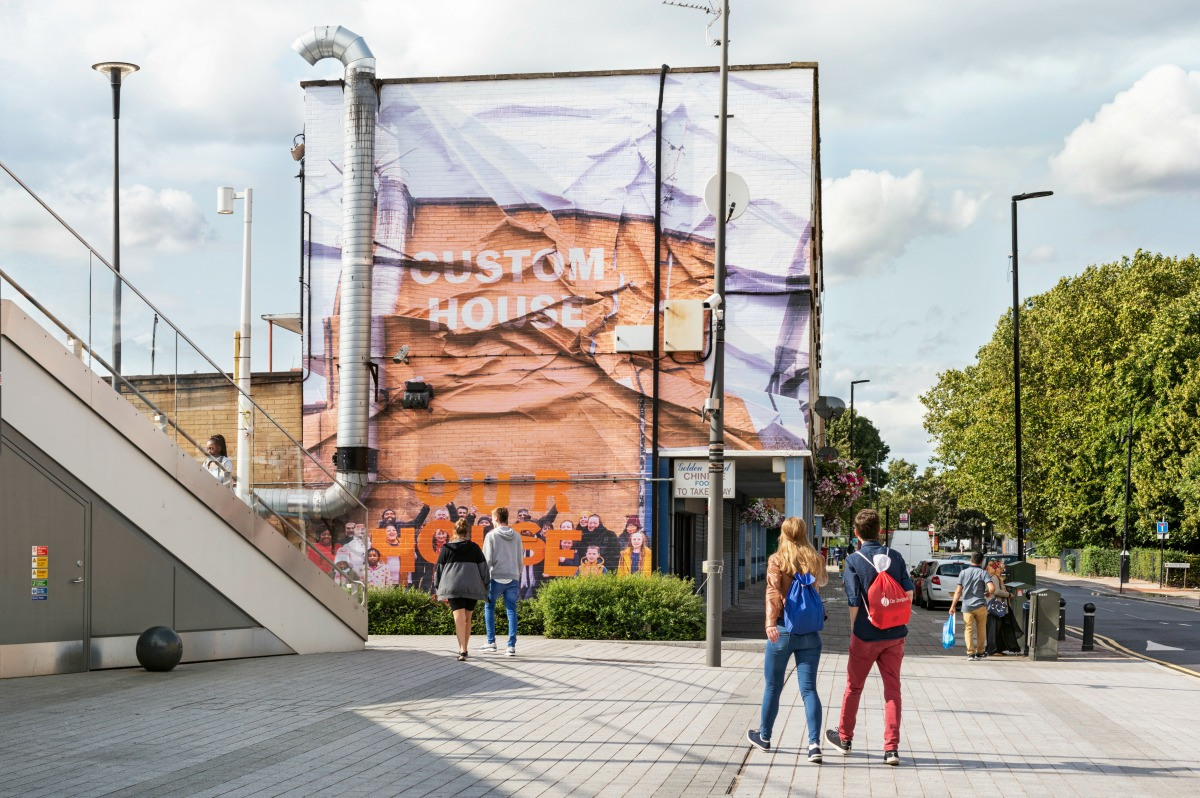
Custom House is Our House
A life-sized group portrait of the individuals who live, work, or own businesses on Freemasons Road, which is set to be redeveloped. Photo: Thierry Bal.
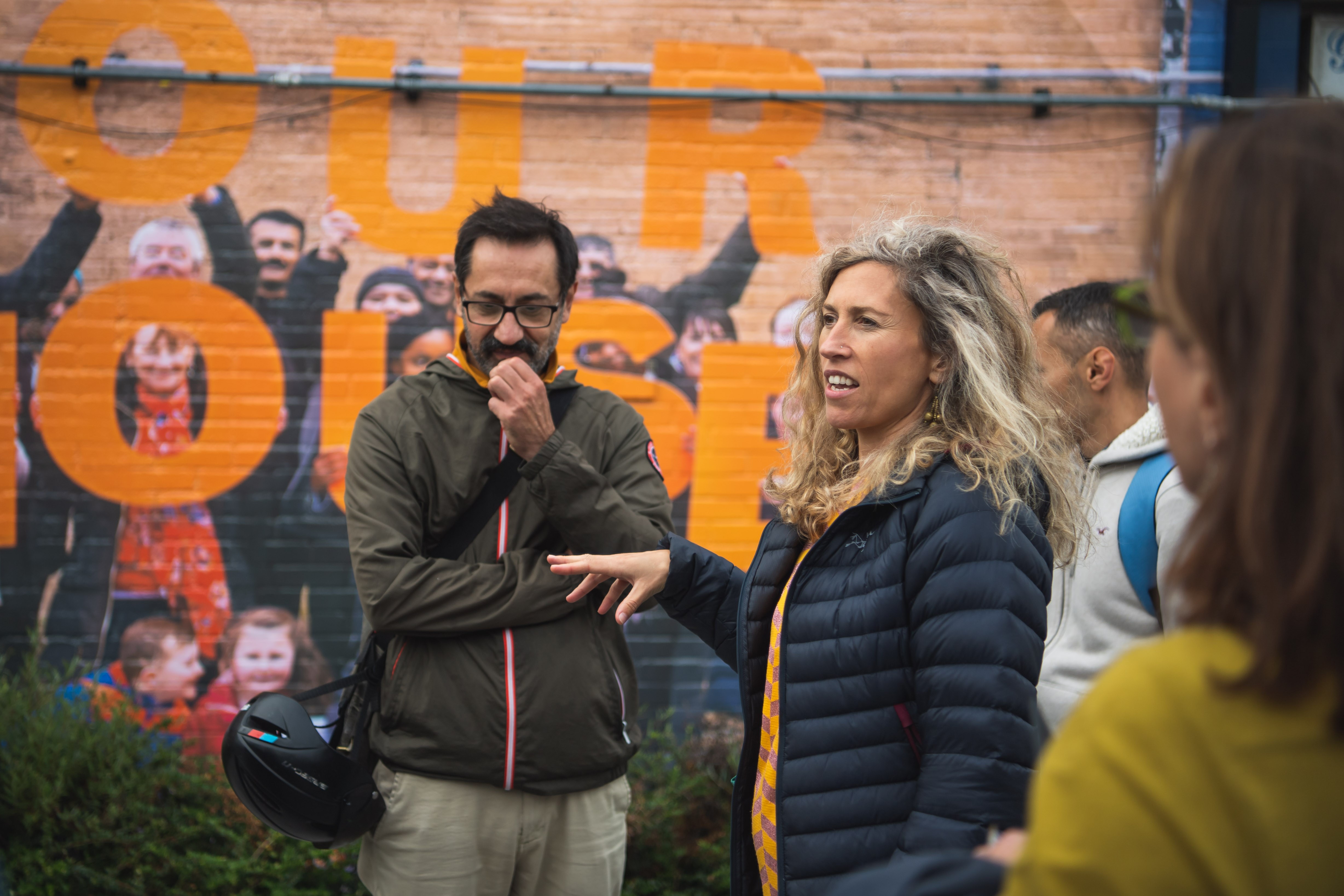
Custom House is Our House
The installation occupies a two-storey wall facing the DLR station. Photo: Stephen Wright.
People have built their lives here for generations.
I have deep criticisms of the processes and policies of regeneration, but it’s not to say that that can’t change. The phrase in the artwork Custom House is Our House comes from PEACH’s Alternative Regeneration Plan. It was the phrase that people felt really moved and inspired by. I like that they’ll see that, and know it’s theirs.
The photoshoot was at the base of the building. The group were holding the words, “our house”. At the top, you see a crumpled image of the building, with “Custom House”. There’s something about the symbolic value of the crumple, and how it questions the changes coming into the area.
The words “our house” and people standing there quite defiantly — there’s a certain positivity about that. People I’ve spoken with since the artwork has gone up have felt really proud of it.
It’s not only space that’s at stake. It’s also about time. It’s very future-orientated here, but there are also ghosts from the past.
Jessie Brennan, artist
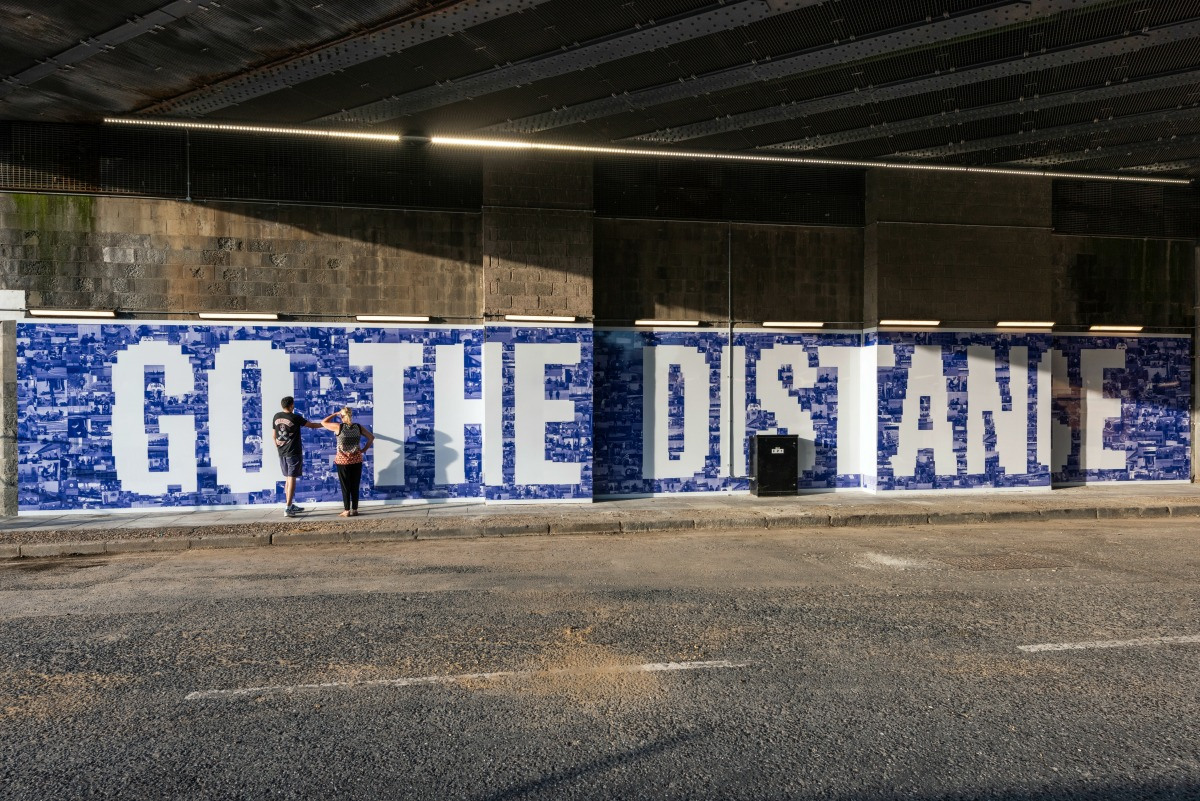
Go the Distance
Created with Peacock Gym, Go the Distance is emblazoned above the Victoria Dock Road tunnel. The work is composed of images taken from the gym’s archives. Photo: Thierry Bal.
Do you see them as four separate works, or as a collection?
Definitely a collection of artworks. We were thinking about them in terms of a concrete poem. So if you start with The People’s Plan, then Go The Distance, Take Your Place and finally Custom House is Our House, they work as a collection, and I think as a way to navigate through a place that is inherently disconnected.
When you think about the DLR and how it cuts the space, the divisions are really made along economic lines. I remember talking to people on the north side of the tracks saying that they didn’t really feel like there’s anything over here for them. Likewise, when I spoke with people on [the south side], they didn’t see anything over there for them. I don’t see the artworks’ role as connecting people up across those spaces. It’s more to point out the fragmentation, not to make it seem cohesive when it isn’t.
There’s a tendency to talk about the fabric of the city and weaving together, and somehow wanting to create something cohesive. That’s not how the reality is experienced, and that doesn’t necessarily have to be a bad thing. I think art’s role is to bring that awareness, rather than to make something appear as it isn’t.
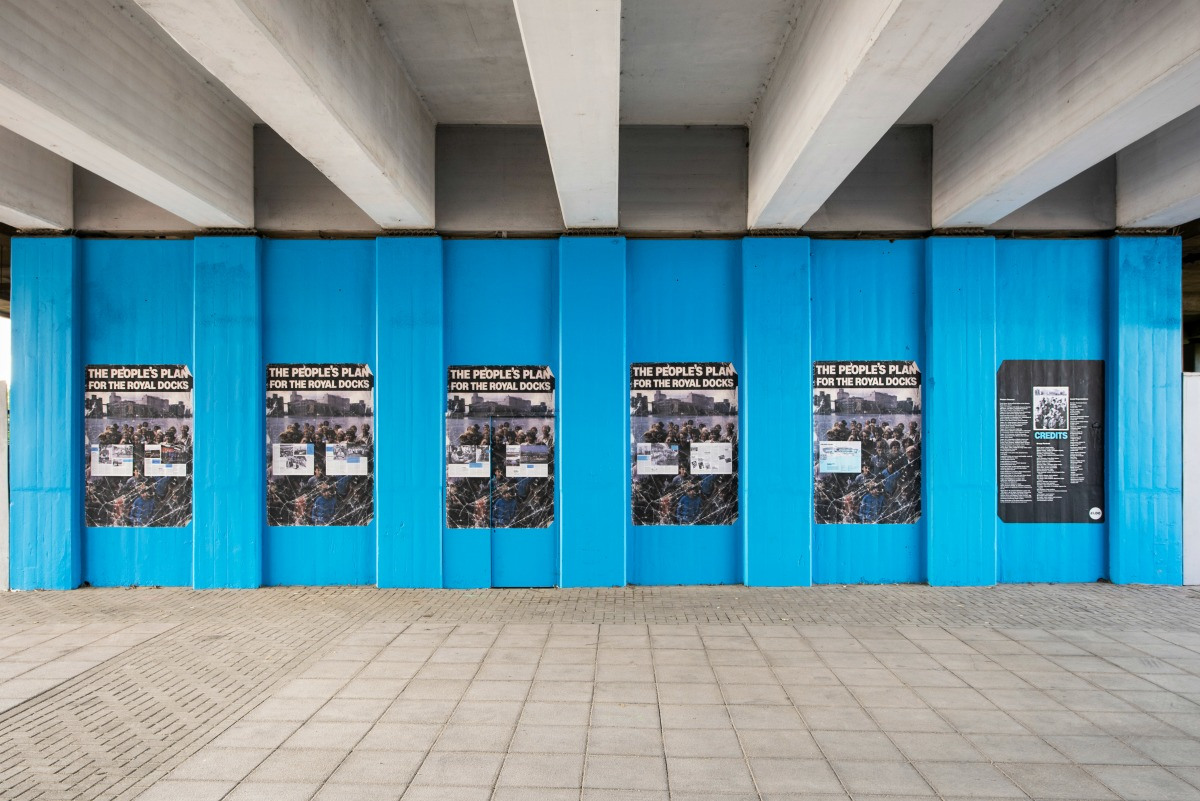
The People’s Plan
The People’s Plan is found on Dock Road underpass. The artwork takes its name from a 1980s community campaign that imagined an alternative vision for the area. Photo: Thierry Bal.
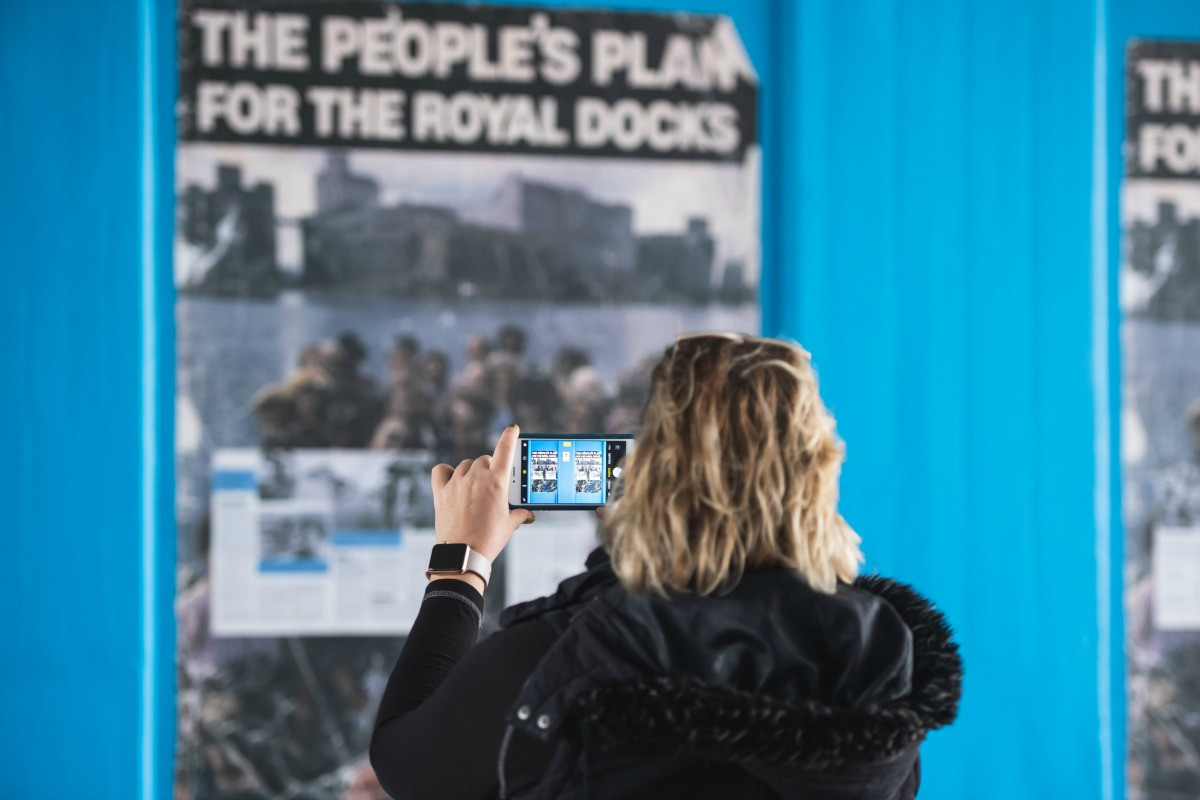
The People’s Plan
For the first time since it was originally distributed 36 years ago, passers-by are able to read the Plan’s bold vision in its entirety. Photo: Stephen Wright.
Just because a place has been almost labelled as being forgotten about, doesn’t mean there isn’t amazing stuff happening. You only have to look.
Jessie Brennan, artist
How did you engage with the community?
Peacock Academy were kind enough to offer their photographic archive. So all the photographs that you see in that work are from them. There’s something about that phrase, coming directly from conversations that I’d had in the cafe there. “Go the distance” in boxing is to go the full 12 rounds without being knocked out... It also has a resonance in the context of regeneration, that people are going to really go the distance to get what they need from it.
And see something followed through.
Exactly. Because there have been so many regeneration proposals, for decades. If you’ve lived here for that long and seen that many promises broken, it’s going to get very tiring.
Then there’s the underpass on Dock Road, and The People’s Plan for the Royal Docks which I got to know well through Royal Docks Communities Voice (RDCV). They were really great in encouraging me to think about popular planning as it was then — it was in 1983 that the plan was published — and how that’s relevant to today.
A copy of the People’s Plan was loaned to me by RDCV member Emma-Jane Crace. It belonged to Connie Hunt, a North Woolwich resident, campaigner, and activist... There was something in the idea of the wrinkled cover, the crumple, that can signify demolition and change. There was this sense that, perhaps, it was about the resurrection of an idea.
Something being born out of that history.
Yes, also for people organising themselves and really wanting to make change. They were empowered to have a say in what happened to their area. I think that’s deeply inspiring, particularly for these times... You’ve got this model from the 1980s informing what happens now, and that’s a brilliant thing.
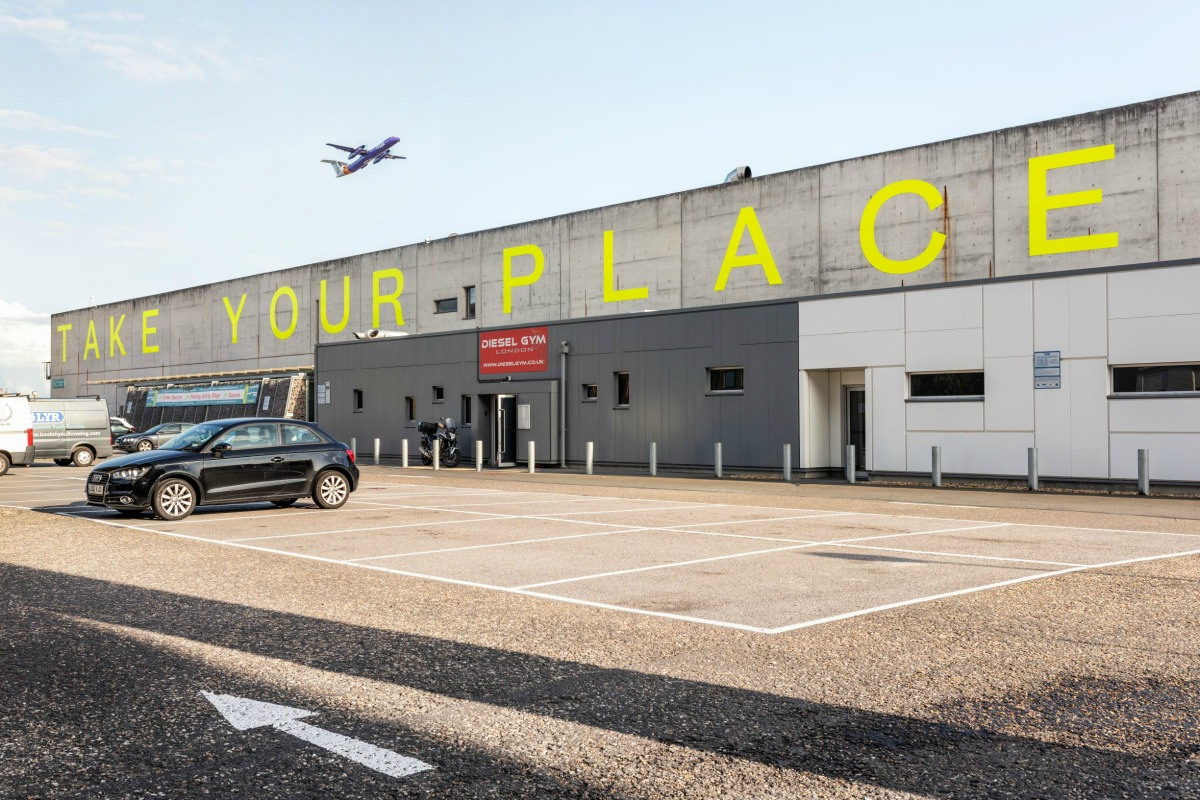
Take Your Place
Take Your Place proclaims its message in neon yellow letters over by Royal Albert Dock. A collaboration with Royal Docks Adventure, the phrase evokes conversations with the London Otters, London’s LGBTQI-friendly rowing club. Photo: Thierry Bal.
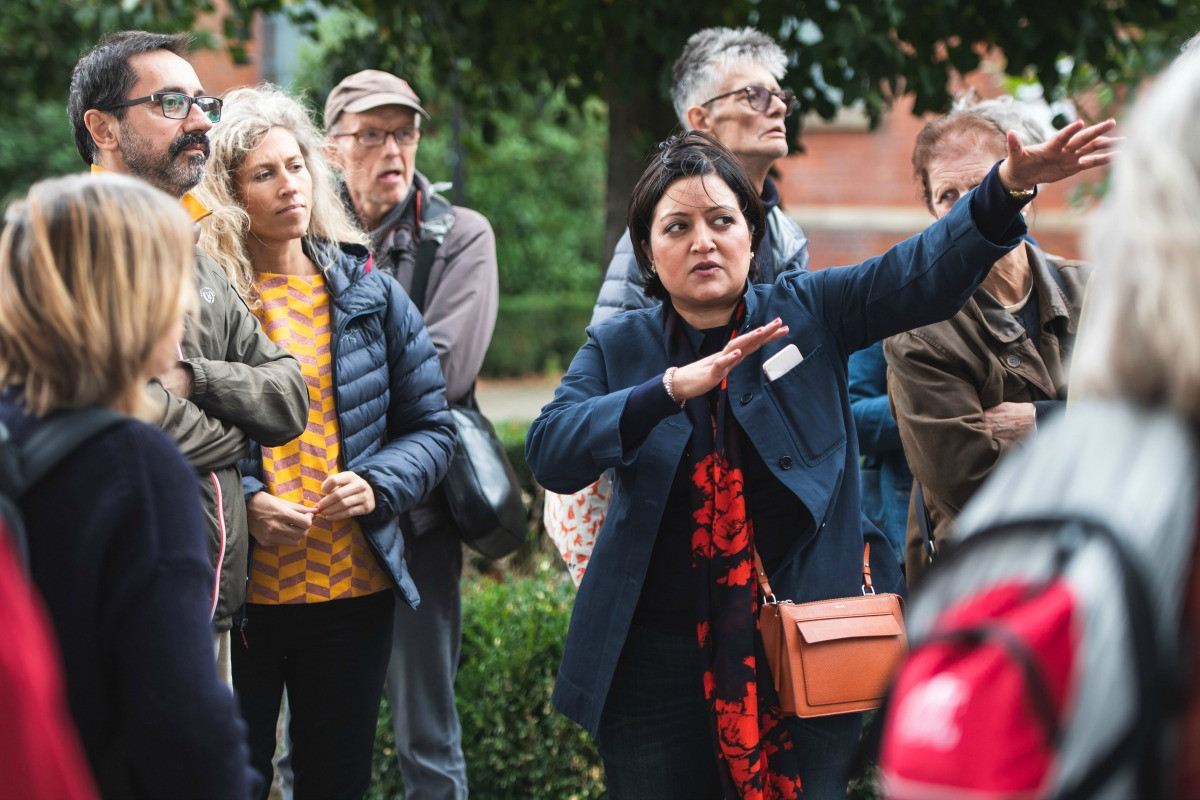
Rokhsana Fiaz
Mayor of Newham Rokhsana Fiaz on the recent Making Space artist walk with Jessie Brennan and artist and researcher Alberto Duman. Photo: Stephen Wright.
I had a few conversations with the London Otters, the LGBTQI-friendly rowing club. They were talking about how much they loved the water, and how even three or four years ago, they wouldn’t have felt that they could come to the place. There was something about this idea of taking space and having the right to. Take Your Place was coming out of that. It’s also a broader call to action, “Come and take your place at the table,” — the decision-making table, if you like.
You really connect with archives and what’s being recorded, where people have been and what was there before.
What people are already doing in the area is really powerful. Just because a place has been almost labelled as being forgotten about, or communities have been forgotten about, doesn’t mean there isn’t amazing stuff happening. You only have to look and then you see it.
The Royal Docks is interesting because it’s not only space that’s at stake. It’s also about time... it’s very future-orientated here, but there are also ghosts from the past. Let’s hope that the people who live here and who have lots at stake can genuinely be involved in a democratic way, and that they can be listened to.
What do you hope the response is, long-term?
There was a really lovely contribution by a member of PEACH who wrote a reflection about how being involved in the project really moved and inspired her. Her son read it out on opening night. It’s very touching to think that people who have been involved genuinely feel that there’s something that art can do, and when it’s for them, when they’re actually involved in it, they’re able to express, collectively, what’s wanted and needed. This is our place.
Download the map and read more about the pieces here. Making Space was commissioned by the Royal Docks Team, a joint initiative by the Mayor of London and the Mayor of Newham. This commission is produced and curated by UP Projects.
Want to help shape the future of the area? Let us know your views here.
